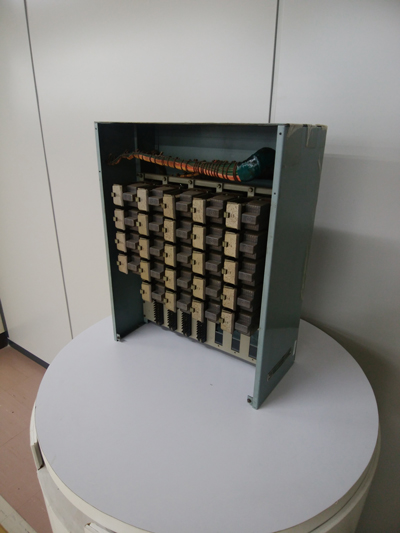

- Home >
- Artifacts of IP Heritage >
- 2017 >
- Autocorrelator computer
Autocorrelator computer

| Manufactured in | 1954 |
|---|---|
| Manufactured by | Fuji Tsushinki Seizo KK (Now, Fujitsu Limited) |
| Owner | Fujitsu Limited |
| Location of historical materials | Fujitsu Numazu Complex
140 Miyamoto Numazu-shi, Shizuoka Japan 410-0396 |
| Visitor information | Not open to the public (Ask for a visit) |
| Contact | GENERAL AFFAIRS DEPT.
Email: fj-archives-history@dl.jp.fujitsu.com |
The computer is a relay type dedicated computer, manufactured by Fuji Tsushinki Seizo (now, Fujitsu) under the request of the Geophysical Institute, Faculty of Science, the University of Tokyo in 1954.
Computing autocorrelation is important to analyze periodic sequence from fluctuation phenomena, however, relatively large memory and circuit needs made it difficult to compute with the technology of the era.
In 1954, Prof. Yoshifumi Tomoda of the University of Tokyo proposed a method to reduce the complexity. It calculated autocorrelation coefficient of binalized input values, then converted the obtained value to final autocorrelation coefficient using the conversion table. This greatly reduced the computation complexity 1/10 or 1/100 of original.
The computer implemented the method, and was used for seismic wave analysis, it can calculate up to 10 unit autocorrelation coefficients at the same time. By setting the clock period to 1/2 second, autocorrelation of N samples data can be calculated in N/2 seconds.
After that, Fujitsu developed new relay type autocorrelation coefficient computer FACOM-426 (decimal 3 digits) in 1957, lately Fujitsu developed high-speed autocorrelation computer for Nobeyama Radio Observatory and ALMA Observatory.
